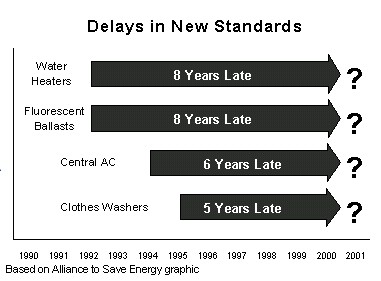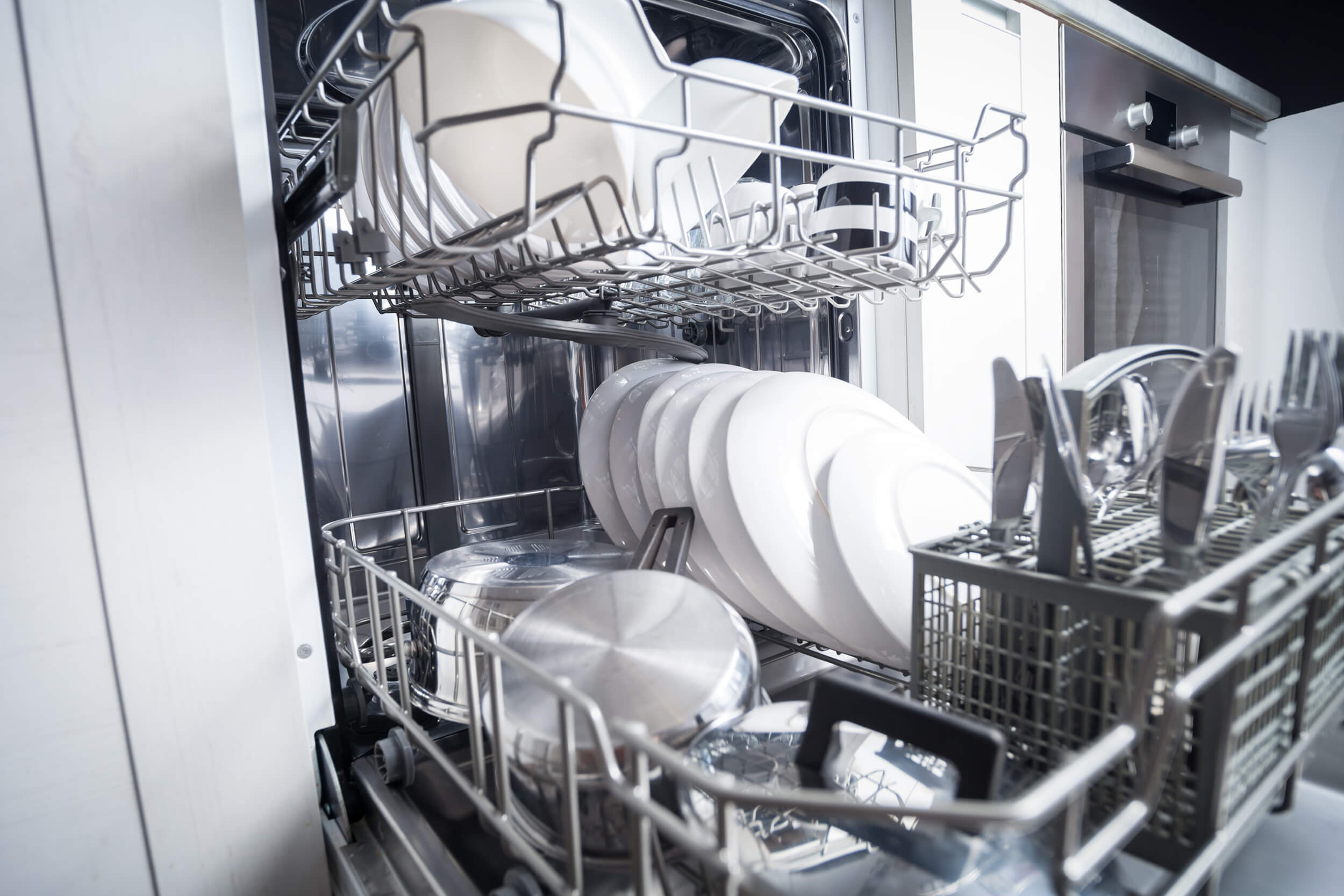Opportunity Knocks: Capturing Pollution Reductions and Consumer Savings From Updated Appliance Efficiency Standards
Authored for ASAP by Jennifer Thorne, Toru Kubo, and Steven Nadel
March 2000
Read the Press Release
Download the Entire Report
Download the Executive Summary
Executive Summary
Appliance and equipment efficiency standards have proven to be one of the most successful strategies for improving energy efficiency in the United States. Standards already in effect will save 1.2 quadrillion British thermal units (Btus or "quads") in 2000 — equivalent to the annual energy use of about 6.5 million American households. These standards will also cut U.S. carbon emissions by 29 million metric tons (MMT) in 2000 — equivalent to removing more than 23 million cars from our roads. By cutting energy consumption and the related emissions of nitrogen oxides, sulfur dioxide, and particulate matter, standards help to alleviate widespread public health problems including asthma and other respiratory diseases, and environmental degradation from smog, acid rain, and haze.
Congress created the first national minimum efficiency standards with passage of the National Appliance Energy Conservation Act of 1987 (NAECA). Minimum efficiency standards remove inefficient products from the market, allowing all consumers to benefit from advances in product performance and design. NAECA called on the U.S. Department of Energy (DOE) to review established standards periodically and upgrade the standards where "technically feasible and economically justified." Despite this requirement, the standards setting process has fallen terribly behind schedule (see chart). New standards on water heaters and fluorescent ballasts are 8 years late, central air conditioners and heat pumps are 6 years late, and clothes washers are 5 years late. Standards on transformers are equally behind schedule.
Despite this requirement, the standards setting process has fallen terribly behind schedule (see chart). New standards on water heaters and fluorescent ballasts are 8 years late, central air conditioners and heat pumps are 6 years late, and clothes washers are 5 years late. Standards on transformers are equally behind schedule.
The benefits from upgrading standards to keep pace with energy-saving innovations are substantial. As a result of revisions to refrigerator standards,a new refrigerator purchased in 2001 will use less than one-fourth of the energy of a model purchased in the early 1970s. Developments in appliance technology have led to a new generation of water heaters, clothes washers, heating and cooling equipment, and other products for which updated standards are appropriate.
This report demonstrates how much more can be achieved with updated efficiency standards. We provide estimates of the energy and water savings, utility bill savings, peak electricity reductions, and pollutant emissions reductions possible with adoption of new standards. Estimates are given for 2010 and 2020 at the national level and on a state-by-state basis.
Findings
- Updated efficiency standards would produce primary energy savings of 0.7 quads in 2010 and 1.8 quads in 2020, approximately 5.3 percent of current residential and commercial energy consumption.
- Energy savings are greatest in the hottest states map. This is largely due to the products included in our analysis. States in warmer climates use the most air conditioning, the largest source of savings.
- Improved standards would eliminate the need for almost 32,000 mega-watts (MW) of summer peak generating capacity in 2010 — the equivalent of the power produced by 64 large (i.e., 500 MW) power plants. In 2020, peak capacity reductions grow to more than 91,000 MW — the equivalent of 180 large power plants. Cutting peak demand reduces the risk of power outages on hot summer days, like those experienced last summer in the Midwest and New York City.
- New clothes washer standards would eliminate close to 10 percent of household indoor water use. Reduced water demand is particularly important in regions facing water shortages. However, everyone will benefit as water savings help avoid or delay construction of costly drinking water and wastewater treatment facilities.
- Consumer utility bills — including energy, water, and sewer costs — would be cut by $5.3 billion in 2010 and $14.6 billion in 2020. Chart on Savings from Updated Appliance Standards
- Cumulative net savings from updated standards will approach $19 billion by 2010 and grow to more than $41 billion by 2020. For every dollar of increased appliance purchase price, consumers will save more than two dollars on their utility bills.
- The most populous states will realize the largest net savings (see map). By 2020, cumulative net savings — utility bill savings less the increased appliance purchase price — range from $56 million in Wyoming to $4.3 billion in California.
- Upgraded standards would reduce carbon emissions by nearly 13 MMT in 2010. In 2020, carbon reductions would approach 31 MMT (Chart on Savings from Updated Appliance Standards). Carbon dioxide is the leading contributor to global warming. By cutting carbon emissions, appliance standards can help the United States meet the carbon emissions reduction targets set out in the Kyoto Protocol, an international agreement reached in December 1997.
- Improved standards would reduce smog-forming nitrogen oxide emissions by 40,000 metric tons (MT) in 2010 and almost 89,000 MT in 2020. Sulfur dioxide emissions (the main component of acid rain) would be cut by 154,000 MT in 2010 and 348,000 MT in 2020. Particulate (soot) emissions would decrease by more than 2,000 MT in 2010 and more than 5,000 MT in 2020. By reducing these pollutants, appliance standards help to alleviate public health problems and environmental degradation.
82 pp., 2000, $18.00, A001




